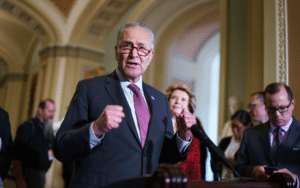Housing costs continue to contribute significantly to inflation, even as rent growth moderates. According to the Bureau of Labor Statistics, shelter inflation accounted for 90% of the consumer price index’s (CPI) monthly gain of 0.2%. The overall index was up 3.2% compared to the previous year.
In July, shelter costs, which encompass housing services such as rent, lodging away from home, and household insurance, rose by 0.4% from the previous month and increased by 7.7% compared to one year ago.
The Federal Reserve has been grappling with these costs in its efforts to curb inflation. Housing costs, typically a lagging indicator, started rising after experiencing significant growth in home prices and rents during the early stages of the pandemic. By March, the year-on-year increase in housing costs reached as high as 8.2%.
Due to the methodology used to measure shelter services costs, changes in these costs tend to lag behind private and industry measures of housing costs. This means that the slowdown in asking rents, as observed in private data, may not have fully manifested yet. In July, Zillow reported a 3.6% increase in asking rents compared to the previous year, marking the lowest increase since April 2021 and significantly below the peak gains of 16.2% recorded in February and March 2022.
The persistent growth in housing services costs during July is not surprising to the Federal Reserve. In June, members of the Federal Open Market Committee noted that inflation in housing services had likely peaked and was expected to decrease throughout the remainder of the year. Researchers at the Federal Reserve Bank of San Francisco also indicate in a recent report that forecasting models suggest a significant slowdown in shelter inflation over the next 18 months.
Nikolai Roussanov, a finance professor at the University of Pennsylvania’s Wharton School, explains, “Shelter was lagging behind other categories because it’s slow to adjust.”
Rent Market Trends
Rent of shelter, the largest subcomponent of the overall shelter index, gained 0.4% in July, the same as June’s increase. The measure of rents is expected to stay similar in August before beginning to cool down.
Home Prices and Rent Gains
Home price and rent gains are tapering out, although a low supply of homes on the market has led to strengthening home prices in recent months as homeowners with historically-low mortgage rates hunker down.
Asking rents may also heat up after a period of extended cooling, according to private measures. In July, the median asking rent measured by Redfin was $2,038—a relatively slow 0.3% increase from one year ago but only $16 off its record high set last summer.
Uncertain Rent Growth
“While rents are flattening out, it is too early to determine if rent growth has bottomed,” stated Redfin deputy chief economist Taylor Marr.
Rent growth varies between private companies as there is no single gauge for the industry. Zillow’s measurement, while showing the slowest year-over-year growth rate since 2021, also displayed early signs of heating up.
Rents measured by Zillow in July had a month-over-month gain of 0.5%, slightly faster than the prepandemic norm. Further data in the upcoming months will clarify whether this is just a market recalibration or an early indication of nascent reheating.

